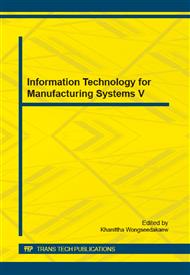p.702
p.707
p.713
p.719
p.725
p.730
p.736
p.742
p.747
Analyzing Inspection Results of Port State Control by Using PCA
Abstract:
The paper applied Principal Components Analysis Method to analyze the PSC inspection results in the area of T-MOU and P-MOU. Set up the assessment of ship detention, the ships' main deficiencies of detentions were found out by the standardization of data processing and correlation matrix calculating. Provide the basis for shipping company to master the safety management focus and pass the PSC inspection.
Info:
Periodical:
Pages:
730-735
Citation:
Online since:
October 2014
Authors:
Price:
Сopyright:
© 2014 Trans Tech Publications Ltd. All Rights Reserved
Share:
Citation:


